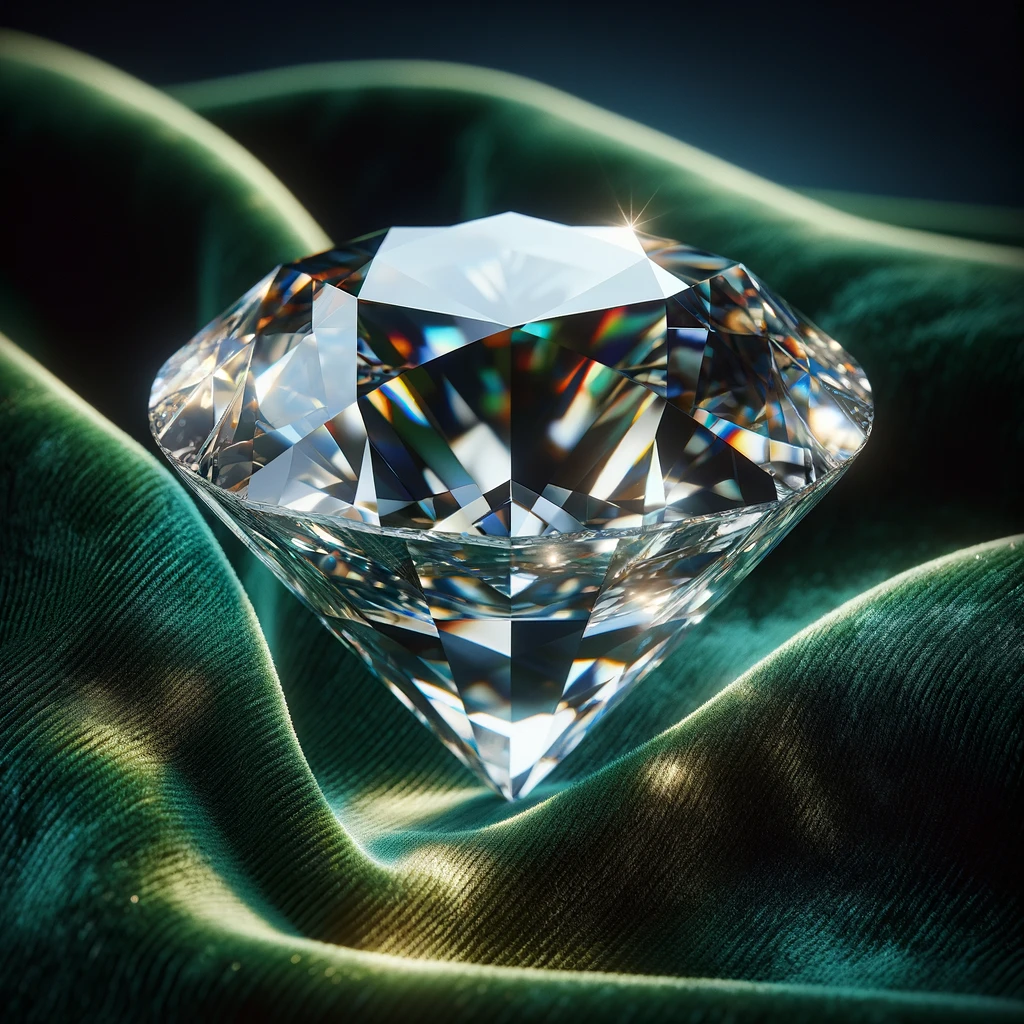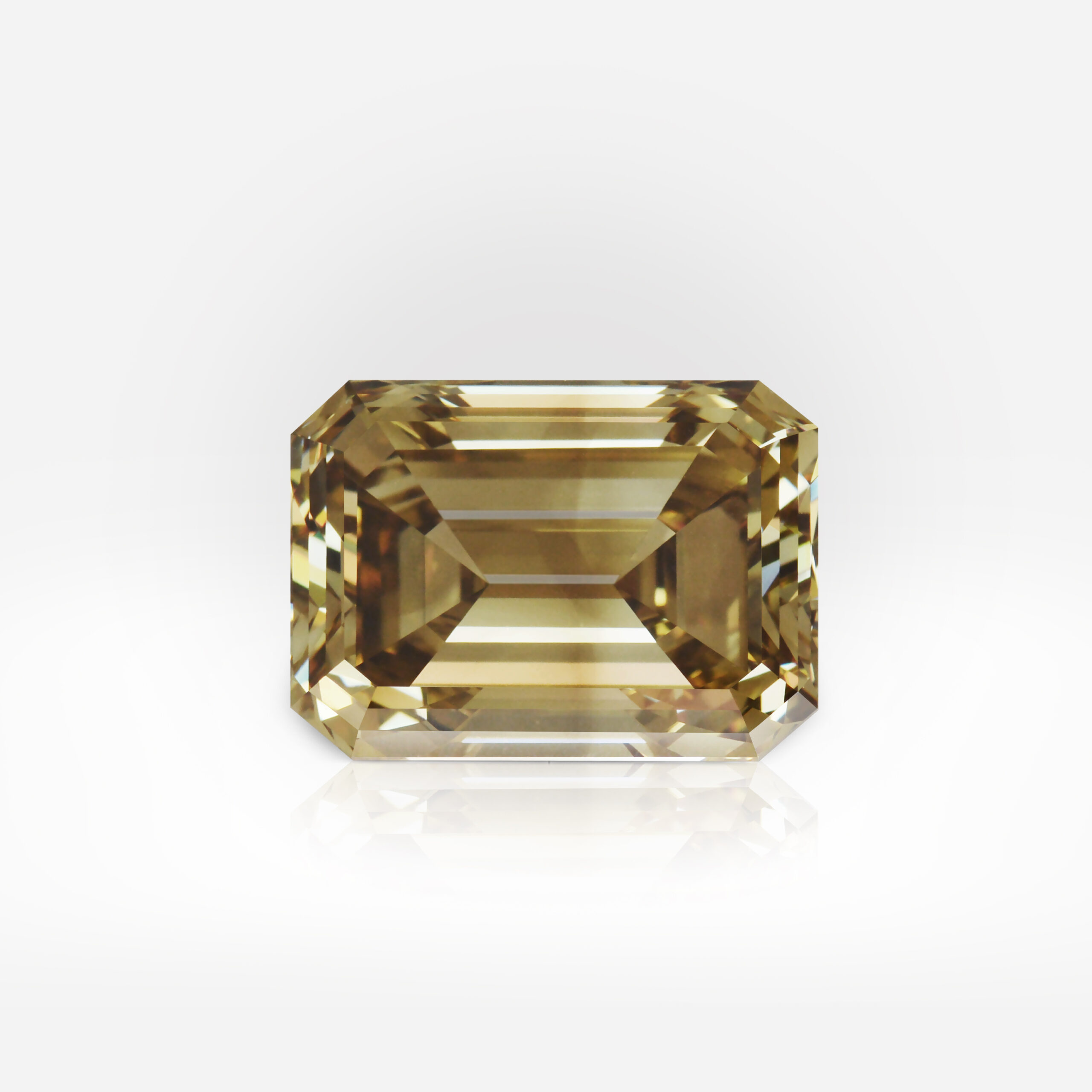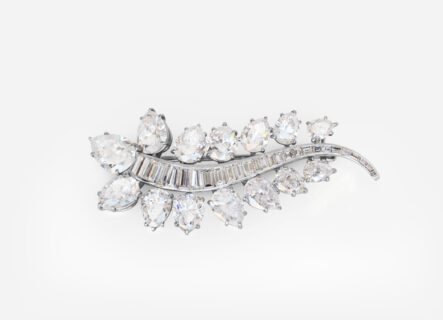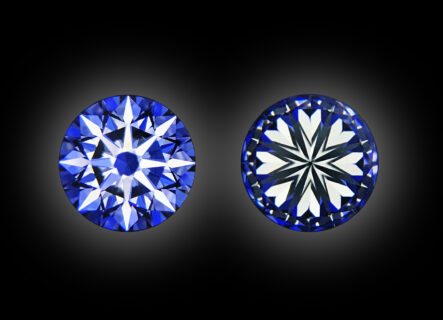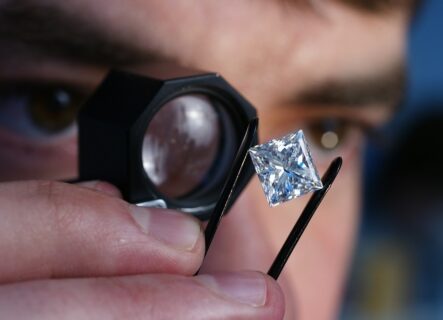VVS clarity diamond
Diamonds have attracted people’s attention for many centuries. Admiring their impeccable beauty, we admire these magnificent creations of Mother Nature. Stones are valued not only by women, but also by men, their crystal clear shine and beautiful shape make us freeze with admiration and delight.
When buying diamonds, most people focus on their size and how the facets of the stone shimmer in the light, but in fact, there are a few more characteristics for evaluating diamonds. There are four main features by which these stones are classified:
- cut – the complexity of the shape, the technique of execution and the quality of work;
- color – from crystal clear to various shades of color;
- purity – whether there are foreign inclusions in the stone;
- weight – measured in carats (1 is equal to 0.2 grams).
These 4 characteristics are used to calculate the fair market value of a diamond. The purity of the stone is assessed by gemologists, this is one of the most important indicators. The degree of clarity is assigned depending on how many inclusions are present in the stone, how noticeable they are, where they are located, what additional defects will be detected during inspection. In this article, we will talk about VVS category diamonds, figure out what it means and how it affects the cost of the gemstone.
VVS diamond meaning
The overwhelming majority of precious stones have various impurities in their structure. Which, as a rule, reduce their value. The more pronounced and noticeable such inclusions are, the lower the price of the diamond in question will be.
Inclusions and impurities are assessed according to several categories:
- Location – are they located inside the stone or on its periphery.
- Size – the smaller the inclusion, the better.
- Quantity – single point inclusions may not significantly affect the cost, while mass ones can significantly reduce the cost of the sample.
- Visibility – how the inclusions are located, how visible they are to the naked eye and when examined with a microscope, in which sector they are located, etc.
In order to classify stones by degree of purity, GIA (Gemological Institute of America) specialists developed a special gradation scale, where each point was assigned a special symbolic designation:
- FL (Flawless) – the highest degree of purity, inclusions are not noticeable even upon close inspection at 10x magnification. Such stones also have no external defects.
- IF (Internally Flawless) – there are no inclusions inside the diamond, but there are minor defects on the outside.
- VVS1 and VVS2 (Very Very Slightly Included) – the treated diamond contains rare inclusions that are almost invisible even at 10x magnification.
- VS1 and VS2 (Very Slightly Included) – there are defects, they are not noticeable to the naked eye, but are visible through a microscope.
- SI1 and SI2 (Slightly Included) – not very noticeable inclusions, which, however, are slightly visible even to the naked eye.
- I1, I2, I3 (Included) – there are inclusions in the stone, they are visible without devices, they noticeably affect the shine and transparency of the diamond.
Classifying a diamond into a particular category requires practical experience and close attention from a specialist. To evaluate a stone, a gemologist must carefully study its internal composition and the condition of the outer shell. For example, a wideband on the periphery of a diamond will be considered a smaller defect than a small dark spot located inside the stone.
Types of VVS diamonds: VVS1 vs. VVS2
The first group (VVS1) includes stones with small defects concentrated on the periphery of the diamond. The second (VVS2) – diamonds with internal inclusions.
VVS1 category stones have barely noticeable defects that can only be seen by a specialist using 10x magnification and examining the stone from the bottom, where its surface will not be hidden by jewelry.
VVS2 diamonds include two or more small inclusions that a specialist can notice when examining the stone from above. A non-specialist, and especially without a microscope, will not be able to find these defects. Without proper experience and knowledge, an ordinary person will not be able to see the flaws in stones of categories VVS1 and VVS2 even with 10x magnification. If a diamond is classified by purity as VVS1 or VVS2, it is an attractive investment asset. These stones contain the slightest inclusions that can only be seen by experienced specialists, who are also armed with high-quality microscopes. You can invest money in purchasing diamonds of these categories without any doubts.
How VVS clarity affects diamond appearance and value
Without artificially enlarging the image, stones from the purest FL category all the way up to VS2 look equally clean and beautiful. However, their purity level varies, and this significantly affects the price of the stones. There are very few crystal-clear diamonds, because other chemical compounds often participate in the formation of these minerals.
A diamond is formed at a temperature of about 1200-1300 degrees Celsius, and it is quite easy to get inclusions of another molten material. That is why there are many more diamonds found with inclusions and defects than pure minerals. At the same time, the size of the stone also directly affects the likelihood of inclusions. The larger the stone, the higher the chances of detecting foreign inclusions.
To help you better understand how impurities can reduce the cost of a 1-carat diamond, we have created a visual table.

For the experiment, stones with similar indicators were used, the changes concerned only clarity. The values for diamonds of other sizes may differ significantly.
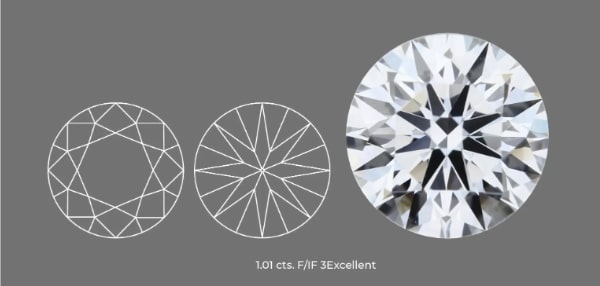
The highest cost is for stones that have virtually no flaws or inclusions. Stones that belong to other categories of clarity are significantly cheaper. This should be taken into account because diamonds of categories VVS1 and VVS2 have only minor defects that are not noticeable to ordinary people even when the image is enlarged.
Stones of categories VS1 and VS2 seem clean upon visual inspection, and the inclusions present can only be seen through a microscope. But their price is as much as 45% lower than that of the same diamonds, but without defects.

Diamonds of categories SI1 and SI2 will also seem quite clean to you without a magnifying glass. But their cost is already half as much – 50%. If you take the trouble to find a good diamond of category SI1 without visible inclusions, you will save a good amount. It is good if the inclusions are present at the bottom or on the side edges of the stone. All defects will be hidden by the jewelry in which such a diamond is placed. At the same time, it will look like a stone of the highest categories of purity, unless you look at it under magnification, of course.
Common Inclusions in VVS Diamonds
The defects we are talking about are miniature inclusions. They appeared in the diamond body at the stage of its formation. Technically, these can be gas bubbles or cracks, other crystalline compounds. There may be scratches, traces of friction, any stains on the surface of the stone. Both internal inclusions and external surface defects can significantly change the transparency, shine, appearance of the stone, which will lead to a drop in its value.
The VVS1 and VVS2 categories are flawless for non-professionals. Even armed with a magnifying glass or microscope, a person who is not an expert in gemology will not be able to see the defects present. But professionals will be able to find the following common flaws in these diamonds:
- Clouds – a cluster of translucent dots collected in small quantities in groups. They are very miniature and do not pose a threat to the purity of the stone. If the clouds are too large, they can make the diamond cloudy and not sparkle as much as it should.
- Pen – various types of cracks, along a break, along a cleavage, which appear whitish when examined. Cutters remove such defects by polishing, saving the stone from further damage.
VVS Diamonds vs. Other Clarity Grades
VVS1 category stones make up only 1% of all diamonds found and processed. They have an insignificant and imperceptible number of inclusions that are visible only to specialists using special equipment. Diamonds of this purity are rare, desirable, in demand and are an excellent area for investment.
VVS1 category stones are characterized by magnificent brilliance and a mesmerizing play of light wandering along the facets of these beautiful diamonds. The fewer defects and inclusions a processed diamond has, the better it reflects light, as a result of which its appearance becomes more noticeable and sparkling.
Stones of this category have a high degree of transparency. They can transmit more light falling on them without absorbing it. This gives them the opportunity to shine, delighting viewers with the impeccable beauty of a natural mineral.
VVS1 diamonds are also characterized as durable. They are not prone to cracking or chipping, as is the case with stones that have more internal and external defects.
Pricing of VVS Diamonds
These stones are not cheap, but they are a great way to invest for the future. Over time, VVS diamonds appreciate in value faster than stones of lower clarity grades. The average price of a 1-carat round diamond with VVS1 clarity and HI color is $5,500. A round diamond with VVS1 clarity and I color can cost around $5,300.
Buying Tips for VVS Diamonds
Before you go shopping for a gemstone, learn more about diamonds and how they differ. This will help you avoid unnecessary markups from the seller, as, unfortunately, happens with incompetent buyers.
It would also be a good idea to personally measure the stone in three dimensions using an electronic caliper. Do not hesitate to ask the seller for the tool – an honest entrepreneur will easily provide you with the opportunity to verify the accuracy of the physical parameters of the diamond.
A visual inspection is also a must. Armed with a magnifying glass with 10x magnification, carefully examine the stone from all sides. Look for scratches, chips, abrasions, internal dark spots, clouds and feathers. If you can find such defects, you should immediately refuse to buy it. Also pay attention to the cut. The classic round diamond cut is valued higher than the fancy one, keep this in mind. The color of the diamond can be different, but a pure transparent stone without any coloring will always be more expensive, this should also be remembered when buying a stone.
FAQs about VVS Diamonds
Are VVS diamonds worth the investment?
These diamonds are not only worth considering as an investment, they have long been on the list of mandatory investment forms used around the world.
Can VVS diamonds be colored?
The color of a diamond depends on the environment in which it was formed and over what period of time. Clarity grade has nothing to do with the shade of a gemstone. Nature itself decides this.
Why do people prefer VVS diamonds for engagement rings?
Such diamonds are symbols of sincere and pure love, like the stone itself. It has no noticeable flaws, which means that the created family will be the same. Plus, such stones are a profitable investment in the future of the family.
Conclusion
VVS diamonds are not only an excellent investment of your money, but also a way to increase your status and the ability to choose rare things of unearthly beauty. Such stones have many advantages. For example, externally they are almost indistinguishable from diamonds of a higher category, but at the same time they are cheaper. It is impossible to detect flaws during a visual inspection, but only with a tenfold increase under a magnifying glass or microscope. Such a jewel does not lose its strength and will always increase in price.
Final tips on choosing the right VVS diamond for your needs
- Protect yourself by buying a diamond with a GIA lab certificate. Other certificates have less accuracy in assessing the diamond. The less reputable the company, the more likely you are to buy something other than what is written on the certificate. It is still a diamond, but not the same.
- Examine and study what you are buying. With your own eyes, without an outside expert, high magnification and a certificate allow even a non-expert to understand the stone. Look at the diamond under magnification, a x10 magnifier is the standard in gemology, but it is more convenient for an ordinary buyer to study the stone under a microscope.
- Take your time, because you are not buying a cheap thing, and it is normal to spend some time discussing and examining it.
- Compare what you saw under magnification with the main points in the certificate. It will be very difficult for you to identify the color of the diamond, but you can see the inclusions. Follow the QR code from the certificate to the GIA website and compare the data from there.


